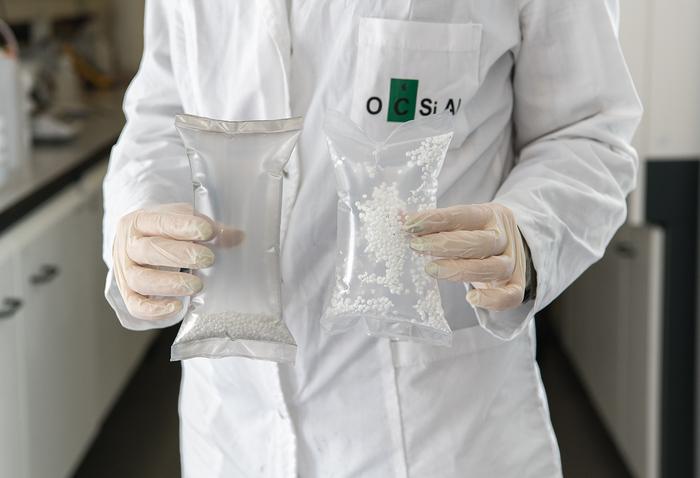
Anti-static bags, FIBC liners, static shielding bags and films, protective tapes and conductive films – all of these have been designed to protect certain goods and products from static electricity. Conventional permanent anti-static additives, such as carbon black, have always led to the degradation of mechanical properties and a darkening effect, and migrating anti-static additives result in non-permanent conductivity at various humidity levels. These problems can now be avoided with single wall carbon nanotubes, which offer the best value proposition in terms of price per property, making them the additive of choice for the industry.
A European manufacturer (the company’s name is currently covered by an NDA) has recently succeeded in producing high-performance polyethylene anti-static film with TUBALL nanotubes by using blown-film extrusion. By introducing 0.01 wt.% of TUBALL nanotubes via the easy-to-handle TUBALL MATRIX 810 concentrate, a surface resistivity in the range 5×10^9 to 10^11 Ω/sq was achieved, which meets the ANSI/ESD S541-2003 and IEC 61340-5-1-2007 standards on protection against electrostatic effects for packaging materials.
The light transmittance of these anti-static PE blown films is 90% in comparison with neat film, which is not achievable with carbon black. Moreover, the stress at break in the perpendicular direction is increased by around 60%, which improves the durability of this PE film. These findings demonstrate one of the key features of TUBALL nanotubes – their ability to create a 3D conductive and reinforcing network even at very low loadings. In contrast to other conventional additives, nanotube-formulated films also show promise in terms of thermal stability.
Application of the TUBALL MATRIX concentrate has enabled a standard clean manufacturing process without the powder or dust associated with using carbon black. All these developments and advantages have encouraged the company to continue testing TUBALL nanotubes and to discover their potential for producing other anti-static parts from polyolefin polymers by various processes, including extrusion and injection moulding.
